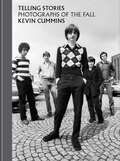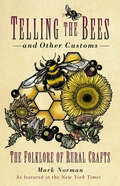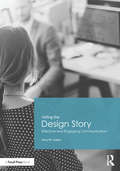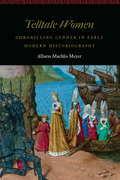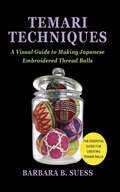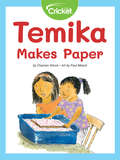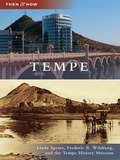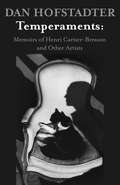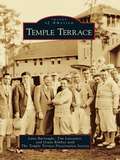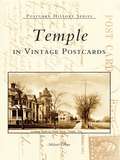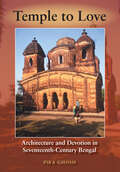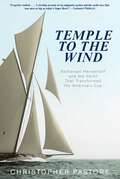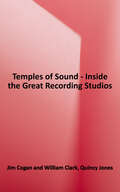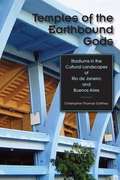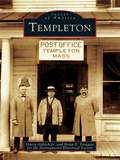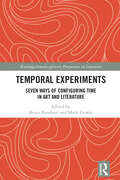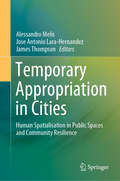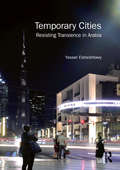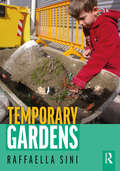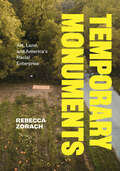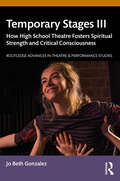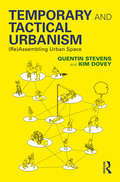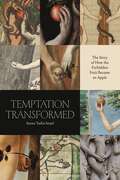- Table View
- List View
Telling Stories: Photographs of The Fall
by Kevin Cummins'No one has captured the look of alternative UK music over the past half a century more tellingly than Kevin Cummins.' - Simon Armitage'Kevin Cummins is a true master in being able to capture the essence of music, the soul of the band. Whatever he does however he does it is a mystery to me but it's pure genius.' - Rankin'Few photographers had such a close connection to The Fall as Manchester-based Kevin Cummins, and his new book, Telling Stories, is a rich visual history of one of the city's most beloved and enduring bands.' - Record Collector Magazine 'Kevin has the uncanny ability of capturing the inner mood of musicians. Be it the dynamics within a pensive Joy Division, or the sense surrounding the fledgeling Fall that something special was around the corner for us all. Kevin's book is nothing less than a remarkable document of a bewildering and defiant anti-fashion movement born in Prestwich, north Manchester in the grimy mid-70s.' - Marc Riley'Capturing forty years of the band's career via his archive, the legendary photographer (whose recent book, Juvenes, documented the story of Joy Division) gives his take on the phenomenon of The Fall and the late, great Mark E. Smith.' - Vive le Rock Contains never-before-seen images.Foreword by Simon Armitage, Poet Laureate. From chaotic early gigs to their final years, NME photographer Kevin Cummins provides a definitive, unique perspective on cult favourites The Fall. In this stunning visual history spanning four decades, discover how and why they emerged as one of the most innovative, boundary-breaking bands in modern music.With a foreword by Poet Laureate and Fall fan Simon Armitage and an interview with Eleni Poulou, as well as never-before-seen images from Cummins' archive, this is the ultimate visual companion to The Fall.
Telling Stories: Photographs of The Fall
by Kevin Cummins'No one has captured the look of alternative UK music over the past half a century more tellingly than Kevin Cummins.' - Simon Armitage'Kevin Cummins is a true master in being able to capture the essence of music, the soul of the band. Whatever he does however he does it is a mystery to me but it's pure genius.' - Rankin'Few photographers had such a close connection to The Fall as Manchester-based Kevin Cummins, and his new book, Telling Stories, is a rich visual history of one of the city's most beloved and enduring bands.' - Record Collector Magazine 'Kevin has the uncanny ability of capturing the inner mood of musicians. Be it the dynamics within a pensive Joy Division, or the sense surrounding the fledgeling Fall that something special was around the corner for us all. Kevin's book is nothing less than a remarkable document of a bewildering and defiant anti-fashion movement born in Prestwich, north Manchester in the grimy mid-70s.' - Marc Riley'Capturing forty years of the band's career via his archive, the legendary photographer (whose recent book, Juvenes, documented the story of Joy Division) gives his take on the phenomenon of The Fall and the late, great Mark E. Smith.' - Vive le Rock Contains never-before-seen images.Foreword by Simon Armitage, Poet Laureate. From chaotic early gigs to their final years, NME photographer Kevin Cummins provides a definitive, unique perspective on cult favourites The Fall. In this stunning visual history spanning four decades, discover how and why they emerged as one of the most innovative, boundary-breaking bands in modern music.With a foreword by Poet Laureate and Fall fan Simon Armitage and an interview with Eleni Poulou, as well as never-before-seen images from Cummins' archive, this is the ultimate visual companion to The Fall.
Telling the Bees and Other Customs: The Folklore of Rural Crafts
by Mark NormanThroughout the history of civilisation, traditional crafts have been passed down from hand to skilled hand. Blacksmithing, brewing, beekeeping, baking, milling, spinning, knitting and weaving: these skills held societies together, and so too shaped their folklore and mythology.Exploring the folklore connected with these rural crafts, Telling the Bees examines the customs, superstitions and stories woven into some of the world’s oldest trades. From the spinning of the Fates to the blacksmith’s relationship with the devil, and the symbolism of John Barleycorn to a ritual to create bees from the corpse of a cow – these are the traditions upon which our modern world was built.
Telling the Design Story: Effective and Engaging Communication
by Amy HuberWhen presenting projects in competitive design environments, how you say something is as important as what you’re actually saying. Projects are increasingly complex and designers are working from more sources, and many designers are familiar with the struggle to harness this information and craft a meaningful and engaging story from it. Telling the Design Story: Effective and Engaging Communication teaches designers to craft cohesive and innovative presentations through storytelling. From the various stages of the creative process to the nuts and bolts of writing for impact, speaking skills, and creating visuals, Amy Huber provides a comprehensive approach for designers creating presentations for clients. Including chapter by chapter exercises, project briefs, and forms, this is an essential resource for students and practicing designers alike.
Telltale Women: Chronicling Gender in Early Modern Historiography (Women and Gender in the Early Modern World)
by Allison Machlis MeyerTelltale Women fundamentally reimagines the relationship between the history play and its source material as an intertextual one, presenting evidence for a new narrative about how—and why—these genres disparately chronicle the histories of royal women. Allison Machlis Meyer challenges established perceptions of source study, historiography, and the staging of gender politics in well-known drama by arguing that chronicles and political histories frequently value women&’s political interventions and use narrative techniques to invest their voices with authority. Dramatists who used these sources for their history plays thus encountered a historical record that offered surprisingly ample precedents for depicting women&’s perspectives and political influence as legitimate, and writers for the commercial theater grappled with such precedents by reshaping source material to create stage representations of royal women that condemned queenship and female power. By tracing how the sanctioning of women&’s political participation changes from the narrative page to the dramatic stage, Meyer demonstrates that gender politics in both canonical and noncanonical history plays emerge from playwrights&’ intertextual engagements with a rich alternative view of women in the narrative historiography of the sixteenth and seventeenth centuries.
Temari Techniques: A Visual Guide to Making Japanese Embroidered Thread Balls
by Barbara B. SuessBringing a time-honored art form into the modern needle-working world, this visually rich how-to guide reveals the techniques of Japanese temari balls. Anyone with an interest in fabric arts, particularly Japanese arts and design, can master stitching techniques and layer threads to create pattern, color, and texture. There are more than 40 easy-to-follow patterns to help fine-tune this skill set that will appeal to not only temari enthusiasts, but to quilters and embroiderers as well. Step-by-step directions and detailed drawings explain each technique, while mini patterns aid in practicing the new skills and help to lay the groundwork for individual and unique designs. This volume is great for beginners and for those stitchers looking for new challenges and intermediate temari designs. The book is more than a collection of patterns: once the basic techniques have been mastered, instruction is provided on how to combine patterns on the same ball to create a unique temari. A guide for left-handed stitchers is also provided.
Temika Makes Paper
by Charnan Simon Paul MeiselTemika and her family are big on recycling paper. Temika and her brother Tyler are ready to argue about where paper comes from – trees or recycled paper. Mom says they’re both right! Dad suggests they make their own paper so that Temika can use it for her Grandma’s birthday card. Mom teaches them how to make homemade paper from scraps of white paper, colored construction paper, and even flowers!
Tempe
by Frederic B. Wildfang Linda Spears Tempe History MuseumCharles Trumbull Hayden built the first canal on the south side of the Salt River in 1870. Soon after, he built a store, a flour mill, and a cable ferry across the river, and he started a town. Since then, Tempe has changed from a small farming community to a lively urban center. Moreover, Tempe's residential growth has made it the seventh-largest town in Arizona. Author Frederic B. Wildfang documents the history. Photographer Linda Spears illustrates the changes.
Temperaments: Memoirs of Henri Cartier-Bresson and Other Artists
by Dan HofstadterIn these five profiles, four of which originally appeared in the New Yorker, the author evokes the life and work of seven gifted artists. Among those presented, often through lively conversations, are Jean Hélion, Mark Rothko, R.B. Kitaj, and Dennis Creffield. Chief among those portrayed however is Henri Cartier-Bresson (1908-2004), the great French photographer and photojournalist who, famed for dodging contact with the press, is here sketched in rare and fond detail. Of all these artists, only two still live: what emerges from this book is a picture, often bizarre, often hilarious, of a bygone bohemian world.
Temple Terrace (Images of America)
by 999 Lana Burroughs Grant Rimbey Tim LancasterThe influential and adventurous Chicago socialite Mrs. Potter Palmer (Bertha) struck out for Florida in 1910, eventually buying thousands of acres of land across the state. In 1914, after setting up residence in Sarasota, she established Riverhills, a hunting preserve on 19,000 acres in the area now known as Temple Terrace. Local historians believe it was Palmer's vision to create one of America's first planned golf course communities, where every Mediterranean Revival villa sold would include its own grove. Intended to provide a hobby and part-time income for the wealthy Northerners lured to the Sunshine State, 5,000 acres were planted with the exotic hybrid Temple orange--making up the largest citrus grove in the world at the time. The new city was named after the orange and for the sloping terrain of the land along the Hillsborough River.
Temple in Vintage Postcards
by Michael LefanFounded in 1881 by the Gulf, Colorado & Santa Fe Railway Company, Temple, Texas became a railroad town overnight. The company purchased 181 acres and then auctioned off parcels to prospective buyers interested in providing services for railroad equipment and passengers. Though early on Temple had several unfortunate nicknames--"Mudville," "Tanglefoot," and "Ratsville"--it soon shed its image as a muddy, rat-infested land, became a major junction for four railway lines, and offered a land of opportunity for commerce. The railway would bring flattering new nicknames like "Progressive Temple" and "Prairie Queen" as well as a chance to be part of the American Dream.
Temple to Love: Architecture and Devotion in Seventeenth-Century Bengal
by Pika Ghosh"[A]n excellent analytical study of a sensationally beautiful type of temple. . . . This work is not just art historical but embraces . . . religious studies, anthropology, history, and literature." —Catherine B. Asher"[A]dvances our knowledge of . . . Bengali temple building practices, the complex inter-reliance between religion, state power, and art, and the ways in which Western colonial assumptions have distorted correct interpretation. . . . A splendid book." —Rachel Fell McDermottIn the flux created by the Mughal conquest, Hindu landholders of eastern India began to build a spectacularly beautiful new style of brick temple, known as Ratna. This "bejeweled" style combined features of Sultanate mosques and thatched houses, and included second-story rooms conceived as the pleasure grounds of the gods, where Krishna and his beloved Radha could rekindle their passion. Pika Ghosh uses art historical, archaeological, textual, and ethnographic approaches to explore this innovation in the context of its times. Includes 82 stunning black-and-white images of rarely photographed structures.Published in association with the American Institute of Indian Studies
Temple to the Wind: Nathanael Herreshoff and the Yacht that Transformed the America's Cup
by Christopher L. PastoreIn 1903, racing for the America’s Cup was no longer a gentleman’s game – it had become a race entangled with political tension and awesome, dangerous stakes. In this pivotal year, the two great rivals Britain and America raced head to head, with Britain determined to win with their privately funded Shamrock III, and America’s bravado backed up by Reliance. Reliance was a yacht like no other – a work of beauty carrying more sail than any single-masted boat before. Some believed that the boat towering 190 feet above the water was simply too dangerous, but the race called for such staggering risk.Pastore brings life to this strikingly astounding vessel from conception, to construction, to the hair-raising trials at sea. It is simply one of the most exciting sea tales ever told.
Temples of Sound: Inside the Great Recording Studios
by William Clark Jim CoganAll great music has a birthplace. Temples of Sound tells the stories of the legendary studios where musical genius and a magical space came together to capture some of the most exciting jazz, pop, funk, soul, and country records ever made. From the celebrated Southern studios of Sun and Stax to the John Coltrane/Miles Davis sessions in producer Rudy Van Gelder's living room, to Frank Sinatras swinging cuts at state-of-the-art Capitol Records, each of the 15 profiles in this book brings great music to life at the moment of its creation. With a trove of never-before-seen photographs and fascinating, all-new interviews with the musicians and producers who made the records, Temples of Sound is a rich inspiration for music fans.
Temples of the Earthbound Gods
by Christopher Thomas GaffneyIn Rio de Janeiro, the spiritual home of world football, and Buenos Aires, where a popular soccer club president was recently elected mayor, the game is an integral part of national identity. Using the football stadium as an illuminating cultural lens, Temples of the Earthbound Gods examines many aspects of urban culture that play out within these monumental architectural forms, including spirituality, violence, rigid social norms, anarchy, and also expressions of sexuality and gender. Tracing the history of the game in Brazil and Argentina through colonial influences as well as indigenous ball courts in Mayan, Aztec, Zapotec, Mixtec, and Olmec societies, Christopher Gaffney's study spans both ancient and contemporary worlds, linking the development of stadiums to urbanization and the consolidation of nation building in two of Latin America's most intriguing megacities.
Templeton
by Brian P. Tanguay Harry Aldrich Jr. Narragansett Historical SocietyThe villages of Templeton, originally called Narragansett, were founded in the mid-eighteenth century along the banks of the region's rivers and ponds. With adequate water power, agriculture and industry flourished, producing hay, corn, wool, paper, bricks, iron kitchenware, and all types of furniture. Templeton shares the history of the villages through the vintage photographs of Oren Williams and Wallace Underwood, two professional photographers who captured life there from the late 1800s to the early years of the twentieth century. Highlights include John Boynton, village tinsmith who founded Worcester Polytechnic Institute; the Templeton Hotel, which was destroyed by fire in 1888; and the Narragansett House, a popular destination for sleighing and school parties.
Temporal Experiments: Seven Ways of Configuring Time in Art and Literature (Routledge Interdisciplinary Perspectives on Literature)
by Marit Grøtta Bruce BarnhartTemporal Experiments: Seven Ways of Configuring Time in Art and Literature conducts an expansive exploration of different modes of timing. Its seven chapters pursue the question of time as it is embodied in key figures that shape both aesthetic and pragmatic life. Working closely with literary, visual, and musical artworks, the book aims to provoke new ways of engaging with the question of time. It treats artworks as experiments that launch temporal figures, and that test out the possibilities and connections these different figures enable. Thus, the book seizes upon works by artists like Anne Carson, King Tubby, and Raymond Queneau as opportunities for thinking through the valence of both existing and untested temporal configurations. What other modes of shaping time, it asks, might be conjured out of the viewing of an Omer Fast film, the reading of a poem by Baudelaire, or of a novel by Tom McCarthy? In treating artworks as temporal experiments, this book stresses the fact that artworks always experiment with the raw materials of time, fashioning it or refashioning it into novel combinations. This book follows the imperatives of these experiments in order to advance a nuanced understanding of the way time insinuates itself into all aspects of social and intellectual life.
Temporary Appropriation in Cities: Human Spatialisation in Public Spaces and Community Resilience
by James Thompson Alessandro Melis Jose Antonio Lara-HernandezThis book conceptualises and illustrates temporary appropriation as an urban phenomenon, exploring its contributions to citizenship, urban social sustainability and urban health. It explains how some forms of appropriation can be subversive, existing in a grey area between legal and illegal activities in the city. The book explores the complex and the multi-scalar nature of temporary appropriation, and touches on its relationship to issues such as: sustainability and building re-use; culture; inclusivity, including socio-spatial inclusion; streetscape design; homelessness; and regulations controlling the use of public spaces. The book focuses on temporary appropriation as a necessity of adapting human needs in a city, highlighting the flexibility that is needed within urban planning and the further research that should be undertaken in this area. The book utilises case studies of Auckland, Algiers and Mexico City, and other cities with diverse cultural and historical backgrounds, to explore how planning, design and development can occur whilst maintaining community diversity and resilience. Since urban populations are certain to grow further, this is a key topic for understanding urban dynamics, and this book will be of interest to academics and practitioners alike.
Temporary Cities: Resisting Transience in Arabia (Planning, History and Environment Series)
by Yasser ElsheshtawyAre Arab Gulf cities, the likes of Dubai, Abu Dhabi or Doha, on their way to extinction? Is their fate obsolescence? Or, are they the model for our urban future? Can a city whose very existence is predicated on an imported labour force who build and operate these gleaming urban centres remain a viable urban entity? Could the transient nature of this urban model, its temporariness and precariousness, also be its doom? In this wide-ranging book Yasser Elsheshtawy takes on these tough, but necessary, questions aiming to examine the very nature of the Arab Gulf city and whether it can sustain its existence throughout the twenty-first century. Having lived in the region for more than two decades he researched its marginalized and forgotten urban settings, trying to understand how a temporary people can live in a place that inherently refuses to give them the possibility of becoming citizens. By being embedded in these spaces and reconciling their presence with his own personal encounters with transience, he discovered a resilience and defiance against the forces of the hegemonic city. Using subtle acts of resistance, these temporary inhabitants have found a way to sustain and create a home, to set down roots in the midst of a fast changing and transient urbanity. Their stories, recounted in this book through case studies and in-depth analysis, give hope to cities everywhere. Transience is not a fait accompli: rather the actions of citizens, residents and migrants – even in the highly restrictive spaces of the Gulf – show us that the future metropolis may very well not turn out to be a ‘utopia of the few and a dystopia of the many’. This could be an illusion, but it is a necessary illusion because the alternative is irrelevance.
Temporary Gardens
by Raffaella SiniThe last 30 years have seen a surge in temporary gardens. The flexibility and new challenges invested in non-permanent landscapes has made them a creative and stimulating testing ground for professionals and impromptu designers. Raffaella Sini examines the historical evolution of the genre, exploring theory, narratives, and strategies informing 80 temporary gardens built in France, Germany, Spain, Portugal, Italy, the United Kingdom, Belgium, Switzerland, Sweden, New Zealand, Canada, Singapore, and the United States. Key topics include: • temporary gardens in 1970s avant-garde art and 1980s public art; • temporary gardens as opportunities to work with live processes, practice inclusion, and explore concepts of social justice and ecology; • temporary gardens to redefine the vocabulary of garden design; and • temporary gardens in tactical urbanism. The book comprehensively decodifies the full range of ephemeral gardens: uprooted, mobile, itinerant, movable, postmodern, installation, exhibited, conceptual, theme, pop-up, guerrilla, grassroots, meanwhile, interim, provisional, activist, community, and parklet. Beyond physical duration, time-focused design in gardens affects the entire process of conceiving, building, experiencing, and managing green spaces; using short-term formats, anyone can invent, trial, and experiment in a condensed experience of landscape. The temporary garden emerges as critical cultural ground for the discourse in landscape architecture, art, ephemeral urbanism, and in urban, landscape, and garden design. It is inspirational reading for designers and students alike.
Temporary Monuments: Art, Land, and America's Racial Enterprise
by Rebecca ZorachHow art played a central role in the design of America’s racial enterprise—and how contemporary artists resist it. Art has long played a key role in constructing how people understand and imagine America. Starting with contemporary controversies over public monuments in the United States, Rebecca Zorach carefully examines the place of art in the occupation of land and the upholding of White power in the US, arguing that it has been central to the design of America’s racial enterprise. Confronting closely held assumptions of art history, Zorach looks to the intersections of art, nature, race, and place, working through a series of symbolic spaces—the museum, the wild, islands, gardens, home, and walls and borders—to open and extend conversations on the political implications of art and design. Against the backdrop of central moments in American art, from the founding of early museums to the ascendancy of abstract expressionism, Zorach shows how contemporary artists—including Dawoud Bey, Theaster Gates, Maria Gaspar, Kerry James Marshall, Alan Michelson, Dylan Miner, Postcommodity, Cauleen Smith, and Amanda Williams—have mined the relationship between environment and social justice, creating works that investigate and interrupt White supremacist, carceral, and environmentally toxic worlds. The book also draws on poetry, creative nonfiction, hip-hop videos, and Disney films to illuminate crucial topics in art history, from the racial politics of abstraction to the origins of museums and the formation of canons.
Temporary Stages III: How High School Theatre Fosters Spiritual Strength and Critical Consciousness (Routledge Advances in Theatre & Performance Studies)
by Jo Beth GonzalezTheatre activities ask adolescents to empathize with those who are different from themselves. Recognizing divergence invites self-reflection and kindles compassion. These actions tap students’ inner cores while at the same time deepening their understanding of privilege, a key component of critical consciousness.Through the lens of critical pedagogy and feminist theory, this book explores the mutually reinforcing development of spirituality and emerging critical consciousness fostered by high school theatre experience. By examining her own public high school theatre program through description, analysis and interpretation, Gonzalez explores why and how theatre work can simultaneously fortify teens’ spiritual growth while activating dawning awareness of the socio-political dynamics in their own lives and the world around them. The book includes the original one-act play Free to Fly, which introduces young people to the dangers of sex trafficking of minors.Temporary Stages III will appeal especially to secondary theatre teachers, theatre education pre-service teachers, and graduate students studying theatre pedagogy and critical cultural theory.
Temporary and Tactical Urbanism: (Re)Assembling Urban Space
by Kim Dovey Quentin StevensTemporary and Tactical Urbanism examines a key set of urban design strategies that have emerged in the twenty-first century. Such projects range from guerrilla gardens and bike lanes to more formalised temporary beaches and swimming pools, parklets, pop-up plazas and buildings and container towns. These practices enable diverse forms of economic, social and artistic life that are usually repressed by the fixities of urban form and its management. This book takes a thematic approach to explore what the scope of this practice is, and understand why it has risen to prominence, how it works, who is involved, and what its implications are for the future of city design and planning. It critically examines the material, social, economic and political complexities that surround and enable these small, ephemeral urban interventions. It identifies their short-term and long-term implications for urban intensity, diversity, creativity and adaptability. The book's insights into temporary and tactical urbanism have particular relevance in the context of the COVID-19 pandemic, which has highlighted both the need and the possibility of quickly transforming urban spaces worldwide. They also reveal significant lessons for the long-term planning and design of buildings, landscapes and cities.
Temptation Transformed: The Story of How the Forbidden Fruit Became an Apple
by Azzan Yadin-IsraelA journey into the mystery behind why the forbidden fruit became an apple, upending an explanation that stood for centuries. How did the apple, unmentioned by the Bible, become the dominant symbol of temptation, sin, and the Fall? Temptation Transformed pursues this mystery across art and religious history, uncovering where, when, and why the forbidden fruit became an apple. Azzan Yadin-Israel reveals that Eden’s fruit, once thought to be a fig or a grape, first appears as an apple in twelfth-century French art. He then traces this image back to its source in medieval storytelling. Though scholars often blame theologians for the apple, accounts of the Fall written in commonly spoken languages—French, German, and English—influenced a broader audience than cloistered Latin commentators. Azzan Yadin-Israel shows that, over time, the words for “fruit” in these languages narrowed until an apple in the Garden became self-evident. A wide-ranging study of early Christian thought, Renaissance art, and medieval languages, Temptation Transformed offers an eye-opening revisionist history of a central religious icon.
Temptation Transformed: The Story of How the Forbidden Fruit Became an Apple
by Azzan Yadin-IsraelA journey into the mystery behind why the forbidden fruit became an apple, upending an explanation that stood for centuries. How did the apple, unmentioned by the Bible, become the dominant symbol of temptation, sin, and the Fall? Temptation Transformed pursues this mystery across art and religious history, uncovering where, when, and why the forbidden fruit became an apple. Azzan Yadin-Israel reveals that Eden’s fruit, once thought to be a fig or a grape, first appears as an apple in twelfth-century French art. He then traces this image back to its source in medieval storytelling. Though scholars often blame theologians for the apple, accounts of the Fall written in commonly spoken languages—French, German, and English—influenced a broader audience than cloistered Latin commentators. Azzan Yadin-Israel shows that, over time, the words for “fruit” in these languages narrowed until an apple in the Garden became self-evident. A wide-ranging study of early Christian thought, Renaissance art, and medieval languages, Temptation Transformed offers an eye-opening revisionist history of a central religious icon.
